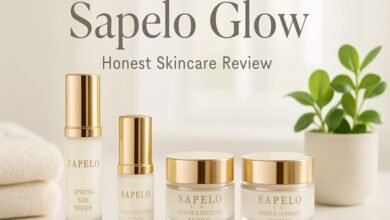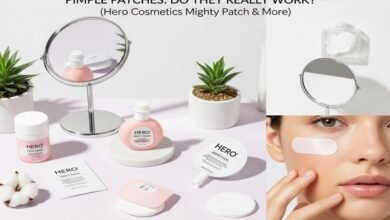PDRN-Infused Regenerative Skincare – The Future of Healing & Anti-Aging
The beauty industry is constantly evolving with innovations that go beyond surface-level care. One of the most groundbreaking trends in 2025 is PDRN-infused regenerative skincare. Originating from medical research and aesthetic dermatology, PDRN (Polydeoxyribonucleotide) has transitioned into mainstream skincare as a powerful ingredient for skin repair, hydration, and anti-aging.
But what exactly is PDRN, and how does it compare to other trending actives like retinol, peptides, or hyaluronic acid? Let’s dive into the details.
🔬 What is PDRN?
PDRN (Polydeoxyribonucleotide) is a DNA fragment derived from salmon or trout sperm. While that may sound unusual, its medical roots are impressive—it’s been used in wound healing, tissue regeneration, and even aesthetic injections for years.
When incorporated into skincare, PDRN accelerates cell turnover, boosts collagen production, and enhances skin repair. This makes it particularly beneficial for:
- 🌟 Fine lines & wrinkles
- 🌟 Acne scars & pigmentation
- 🌟 Sensitive or damaged skin
- 🌟 Post-procedure recovery (microneedling, lasers, peels)
👀 First Impressions – Texture & Feel
Most PDRN creams, ampoules, and serums feel lightweight yet nourishing, striking a balance between hydration and repair. Unlike some actives that can cause dryness or irritation (like retinol), PDRN is generally gentle and suitable for sensitive skin.
- 💧 Hydrating but not greasy – Ideal for layering with other products.
- 🪶 Soothing finish – Helps calm redness and inflammation.
- ✨ Glowy effect – Leaves skin looking plump and fresh.
🧪 How Does PDRN Compare to Other Skincare Actives?
With so many hero ingredients already in the beauty world, it’s fair to ask: Where does PDRN stand in comparison?
- PDRN vs Retinol – Retinol speeds up cell turnover but can cause peeling and irritation. PDRN promotes regeneration without the harsh side effects, making it safer for sensitive skin.
- PDRN vs Peptides – Both help with collagen stimulation, but PDRN offers a faster healing effect, especially for damaged or post-procedure skin.
- PDRN vs Hyaluronic Acid – Hyaluronic acid hydrates; PDRN not only hydrates but also repairs and strengthens skin tissue.
- PDRN vs Growth Factors – Similar regenerative potential, but PDRN is often more stable and widely studied in wound-healing contexts.
👉 Verdict: PDRN isn’t replacing these actives—it complements them, making it a versatile addition to modern skincare routines.
🌍 Why PDRN Skincare is Trending in 2025
Several factors are fueling the rise of PDRN-infused skincare this year:
- 📈 Shift Toward Medical-Grade Skincare – Consumers want dermatologist-level results at home.
- 🧖 Post-Procedure Skincare Boom – More people are getting lasers, microneedling, and fillers, which require effective recovery solutions.
- 🌿 Skin Barrier Awareness – Instead of over-exfoliation, the trend is now about repairing and strengthening.
- 💎 Luxury Meets Science – PDRN is often marketed in high-end serums and creams, aligning with the luxury skincare trend.
🔄 Product Review – PDRN in Action
Several beauty brands are launching PDRN serums, creams, and ampoules:
- PDRN Repair Ampoules – Popular in Korean skincare, these highly concentrated formulas target fine lines and scars.
- PDRN Creams – Provide barrier support, hydration, and soothing effects—perfect for sensitive or post-treatment skin.
- PDRN Sheet Masks – An easy way to soothe redness and boost glow after cosmetic treatments.
📌 First-Hand Results (based on user reviews and dermatology insights):
- Visible improvement in texture and radiance within 2–3 weeks.
- Noticeable plumping and reduced fine lines in 6–8 weeks.
- Excellent for post-acne marks and redness reduction.
⚖️ Pros & Cons of PDRN Skincare
✅ Pros:
- Gentle yet highly effective in regeneration.
- Works for all skin types, including sensitive.
- Enhances recovery post-skin treatments.
- Boosts both hydration and collagen.
❌ Cons:
- 💸 Pricey – Positioned as a luxury ingredient.
- 🧬 Animal-Derived – Not vegan-friendly, which may concern some users.
- ⏳ Gradual Results – Like most skincare, visible effects take consistent use.
🥇 Who Should Try PDRN Skincare?
PDRN is ideal for people who:
- 🌟 Have sensitive skin and can’t tolerate harsh actives.
- 🌟 Want anti-aging benefits without irritation.
- 🌟 Need recovery skincare after dermatological procedures.
- 🌟 Prefer science-backed ingredients over trendy but unproven ones.
If you’re already using retinol or vitamin C, PDRN can be layered in to speed up healing and enhance results.
📌 Final Verdict – Is PDRN the Future of Skincare?
PDRN-infused regenerative skincare is more than a trend—it’s a breakthrough. By bridging the gap between medical aesthetics and daily skincare, it offers users the chance to experience faster healing, smoother texture, and visible anti-aging results at home.
While it may not completely replace classics like retinol or hyaluronic acid, it complements them beautifully, making it one of the most exciting innovations in 2025 skincare.
👉 If you’re ready to invest in luxury, science-driven beauty, PDRN products are worth trying—especially if skin repair and resilience are your top priorities.



